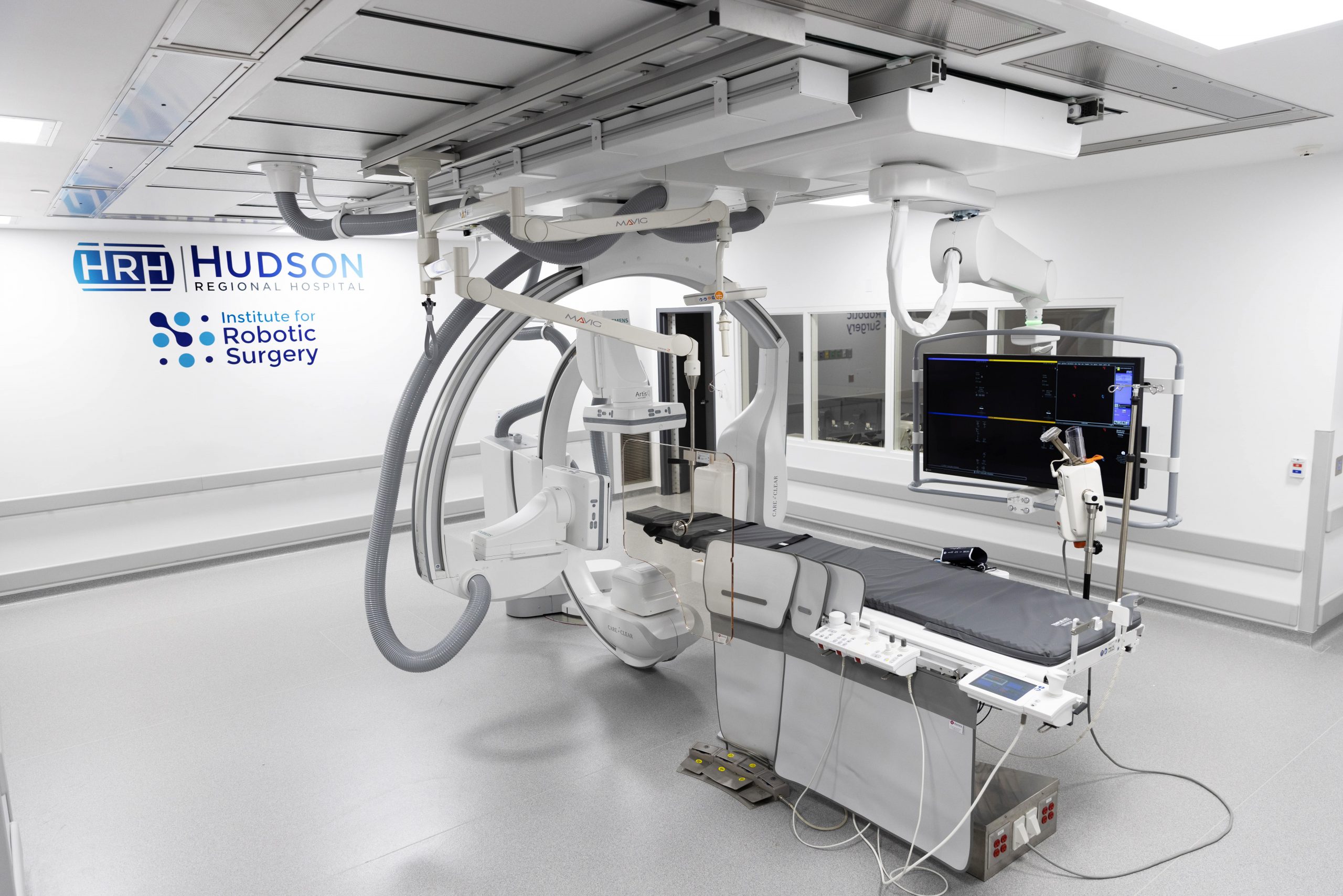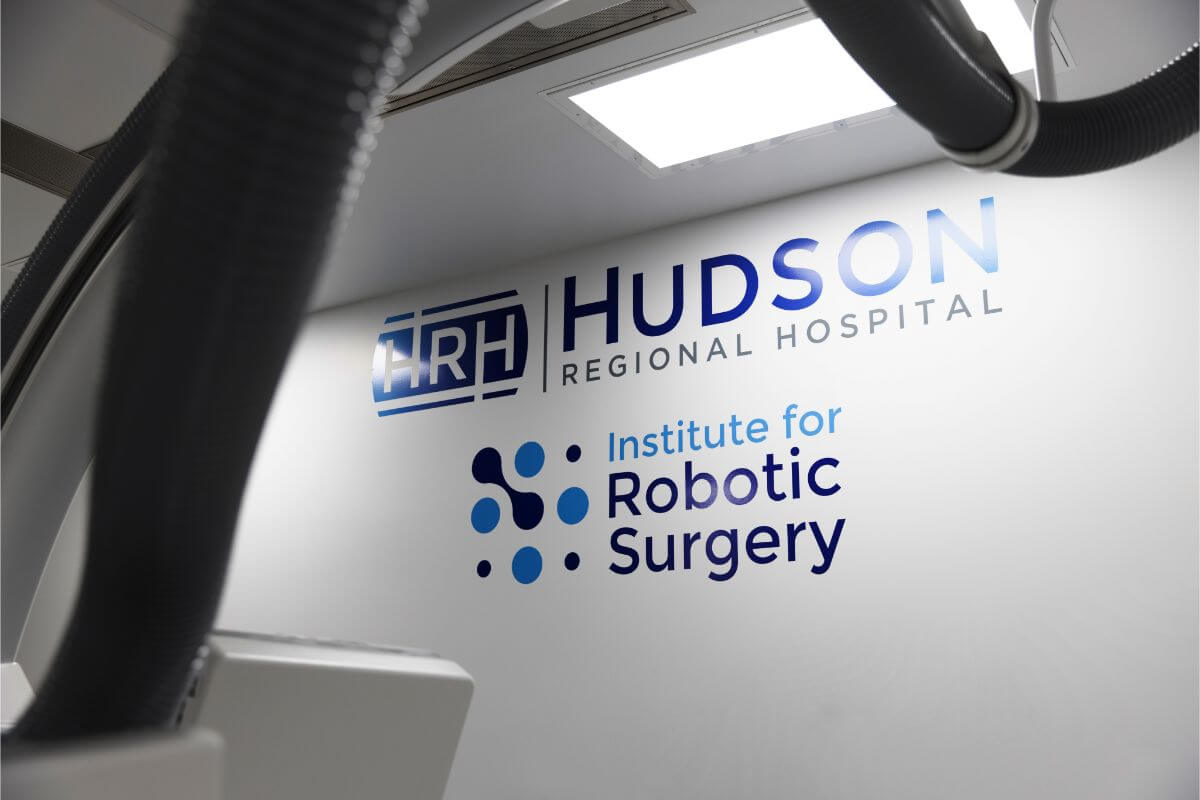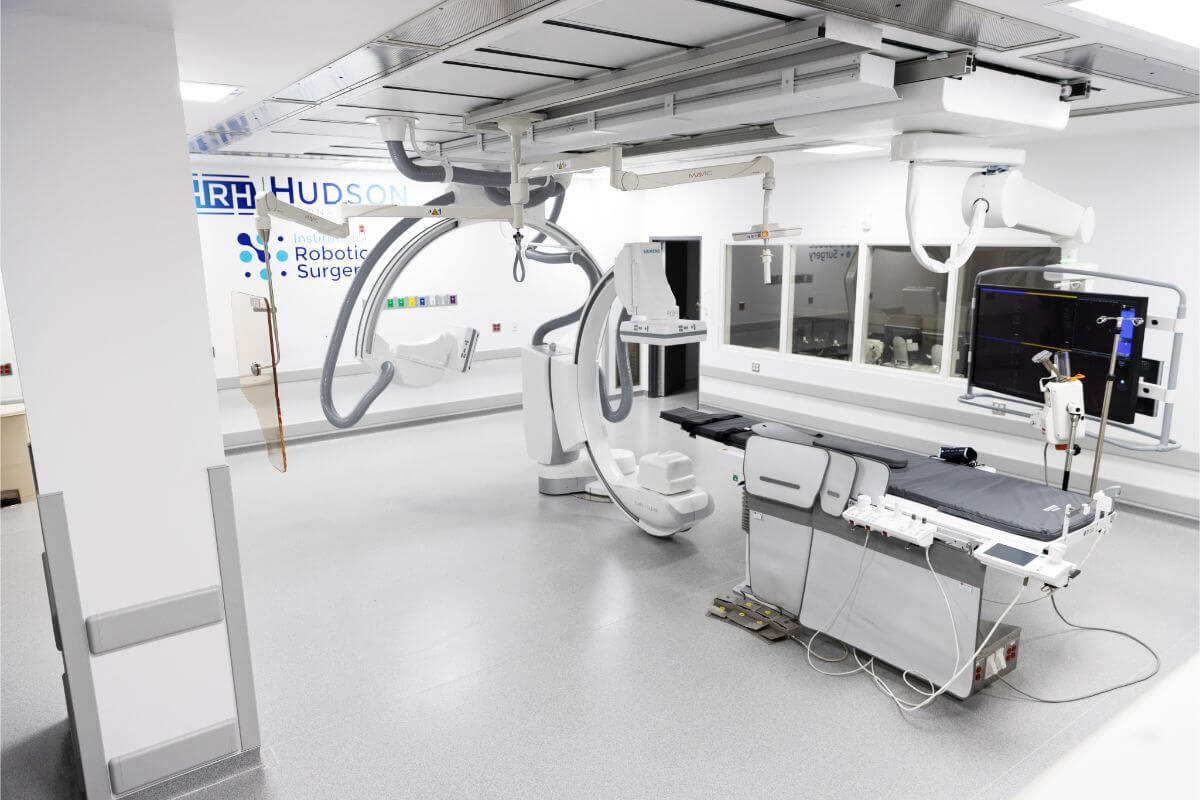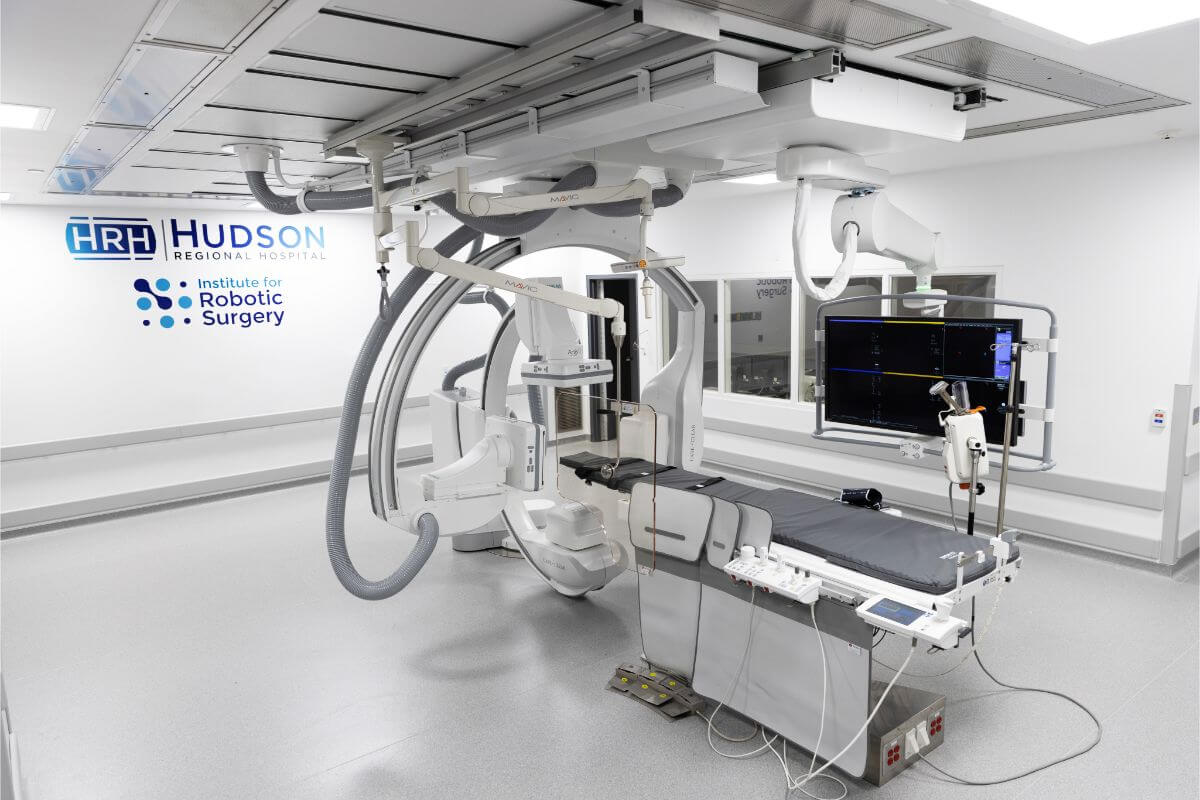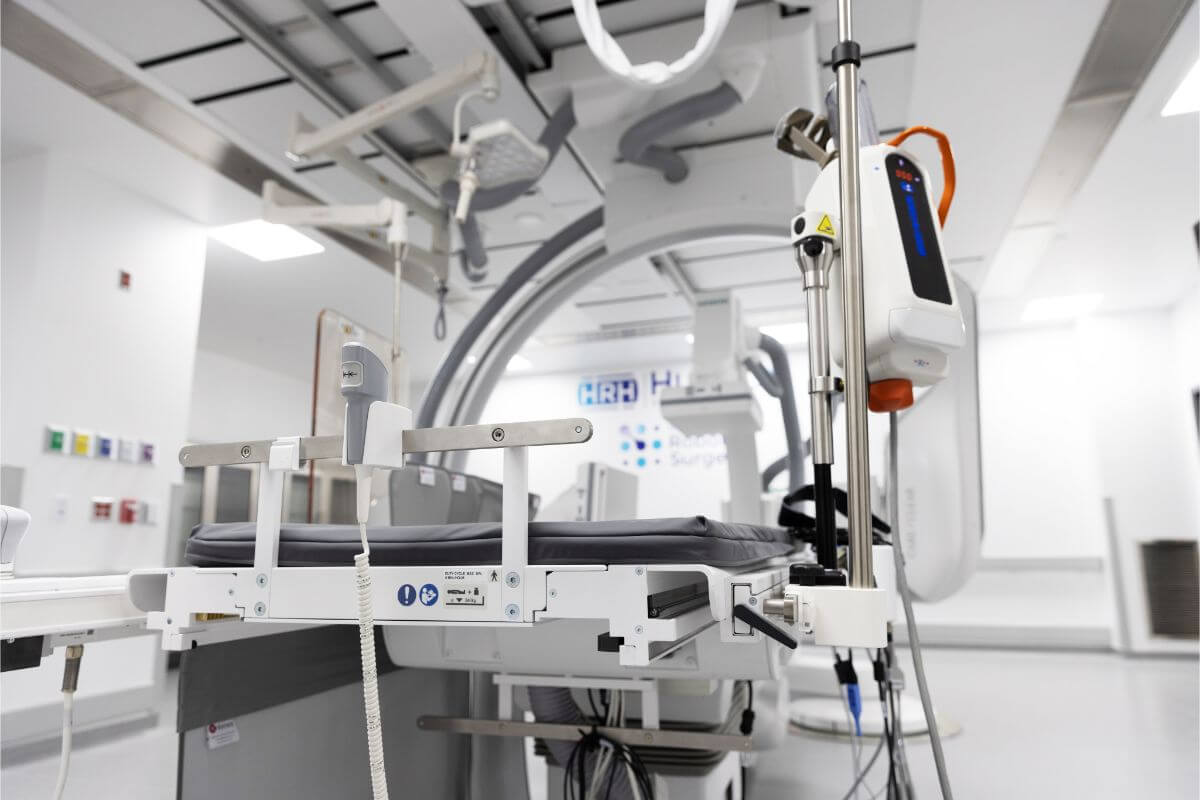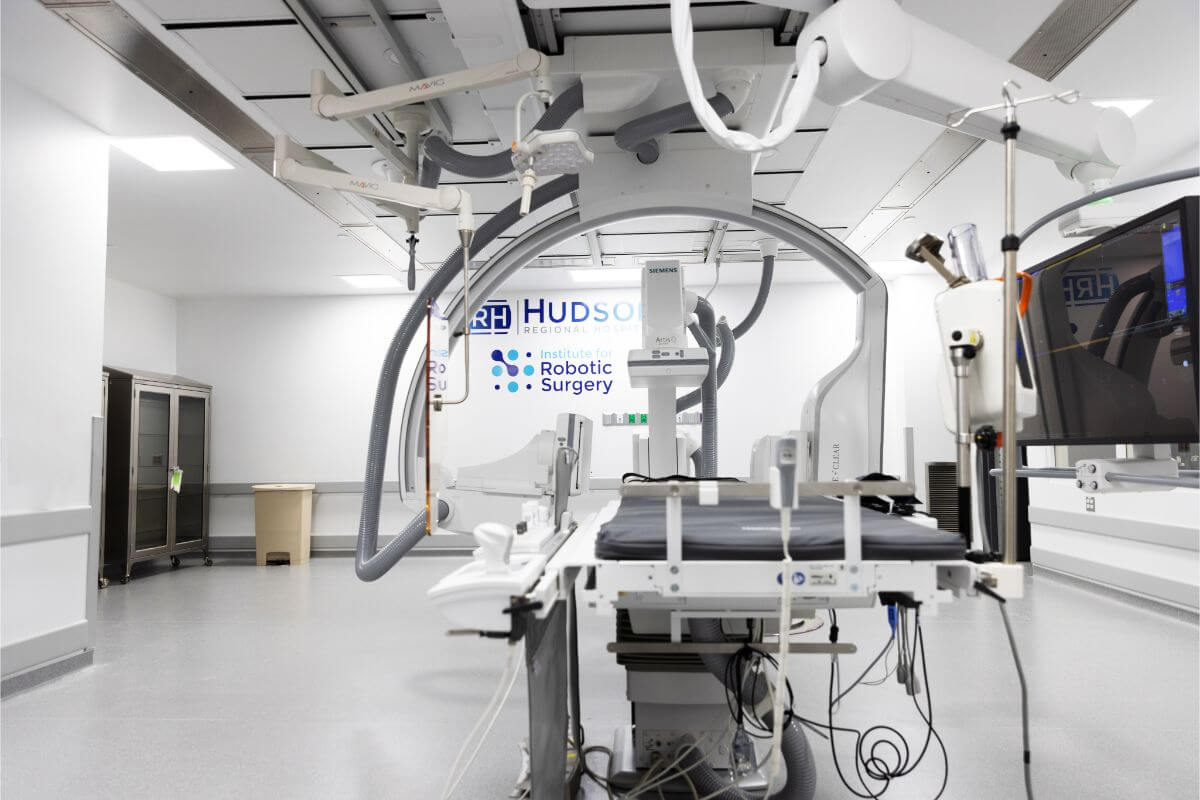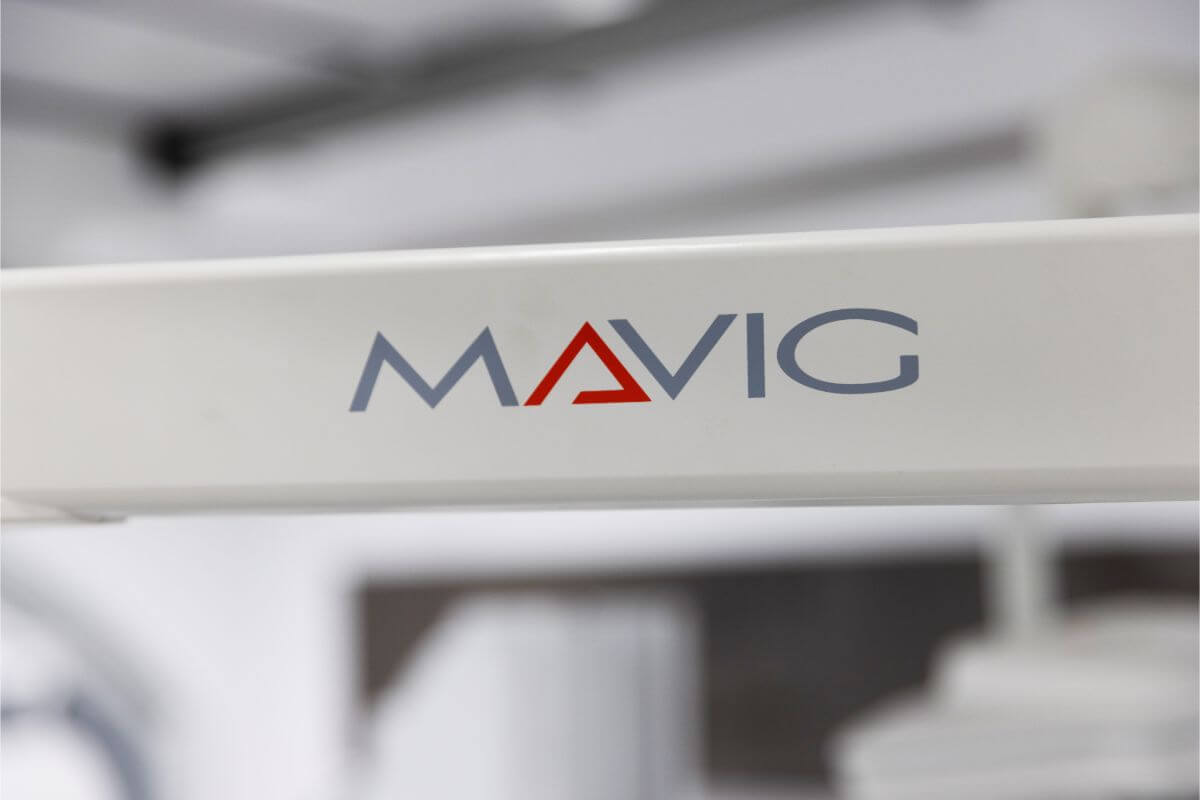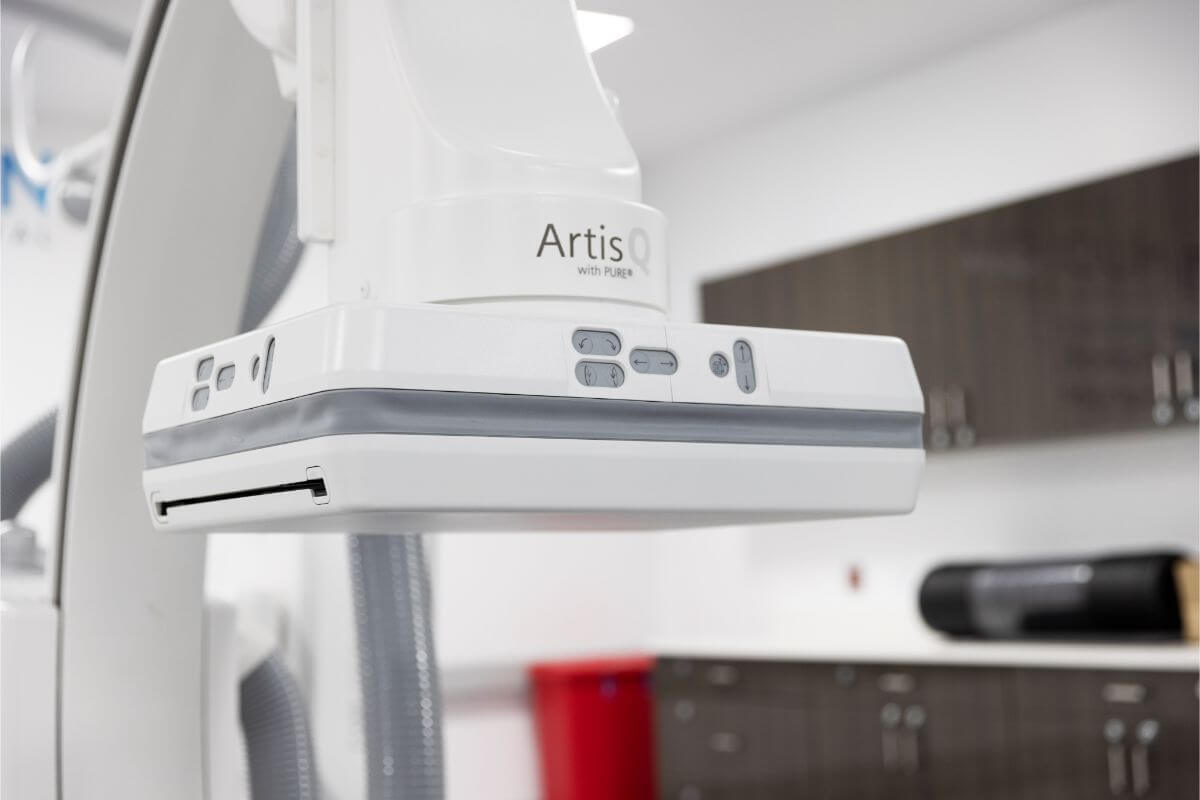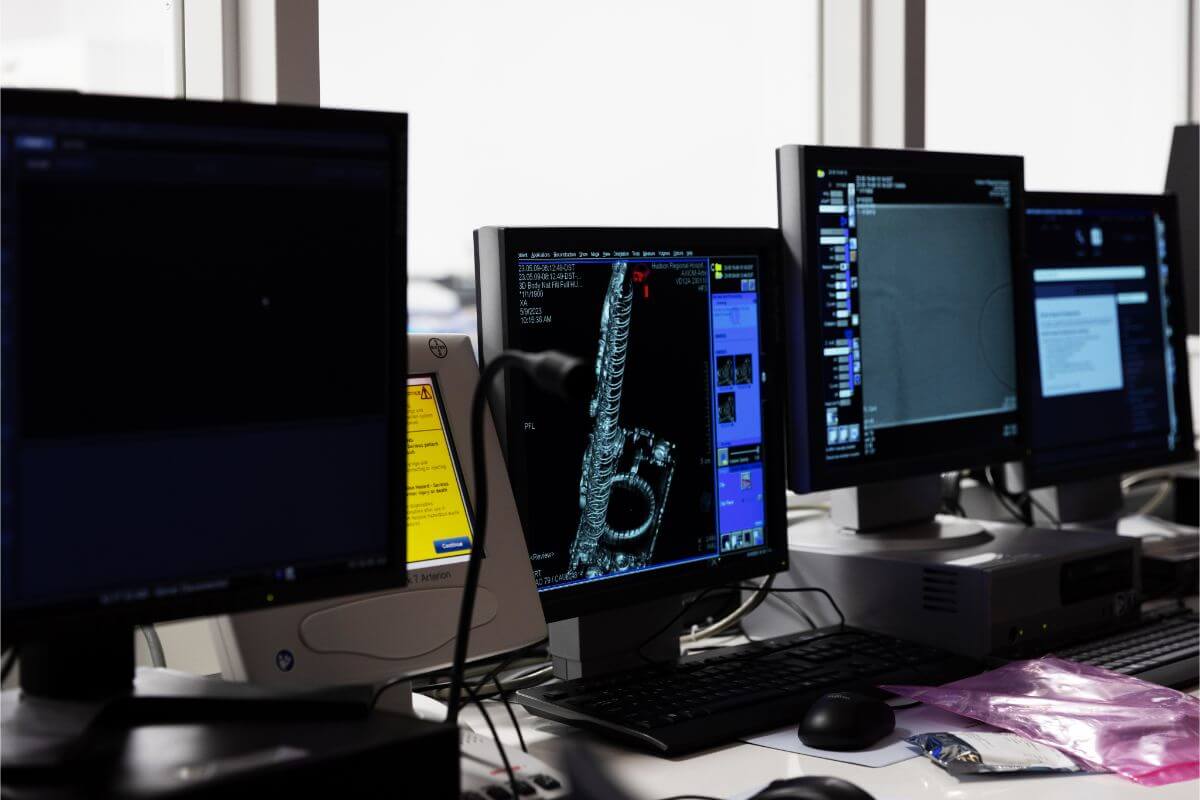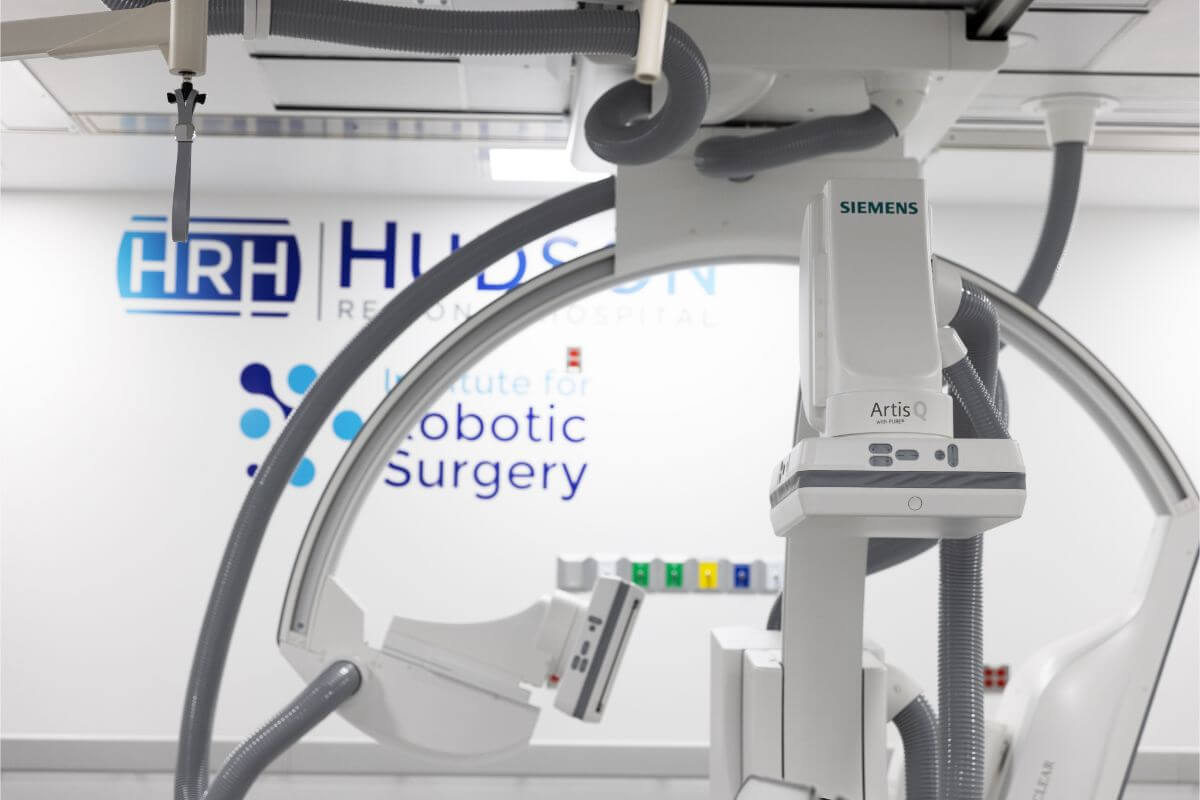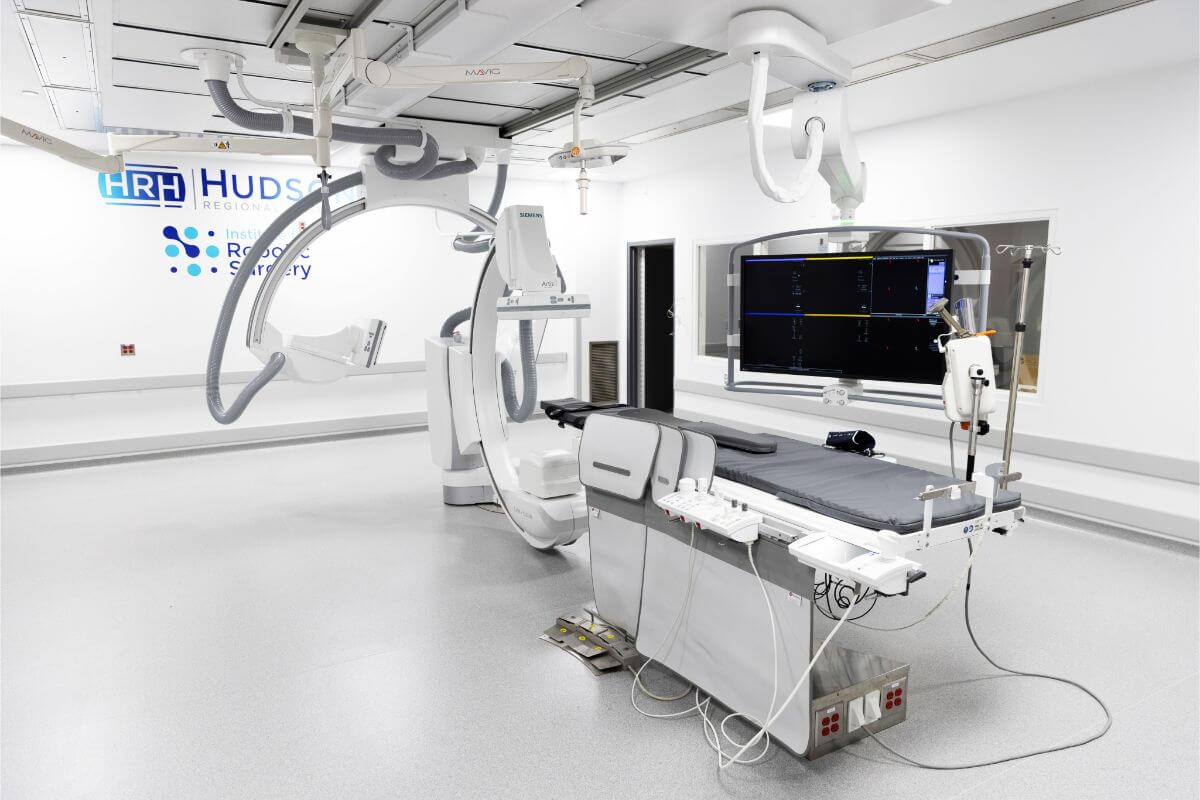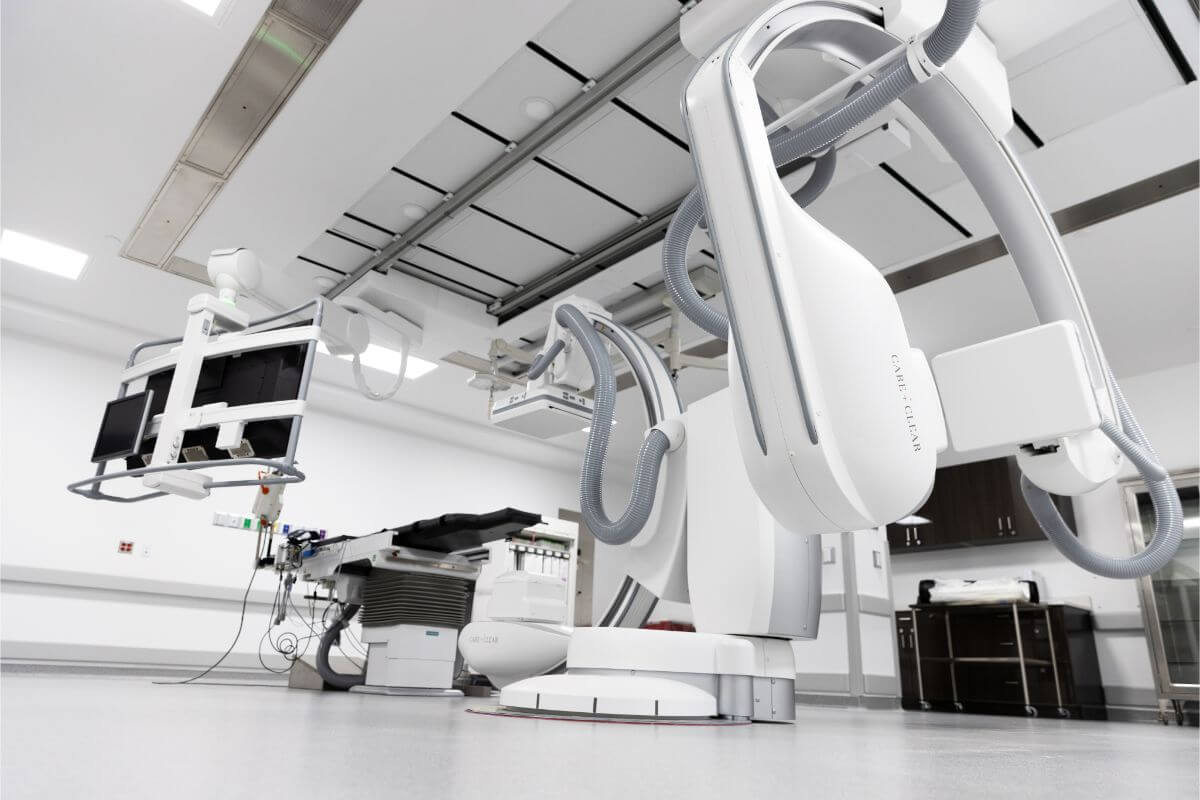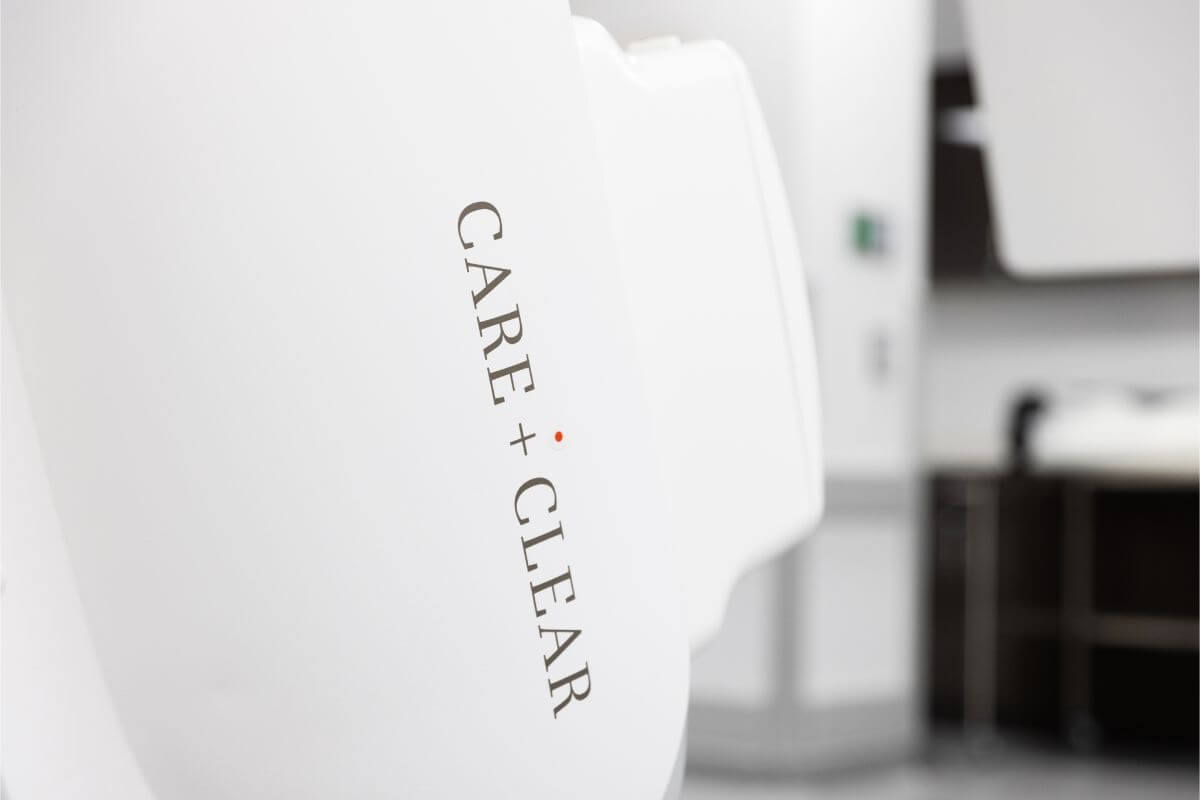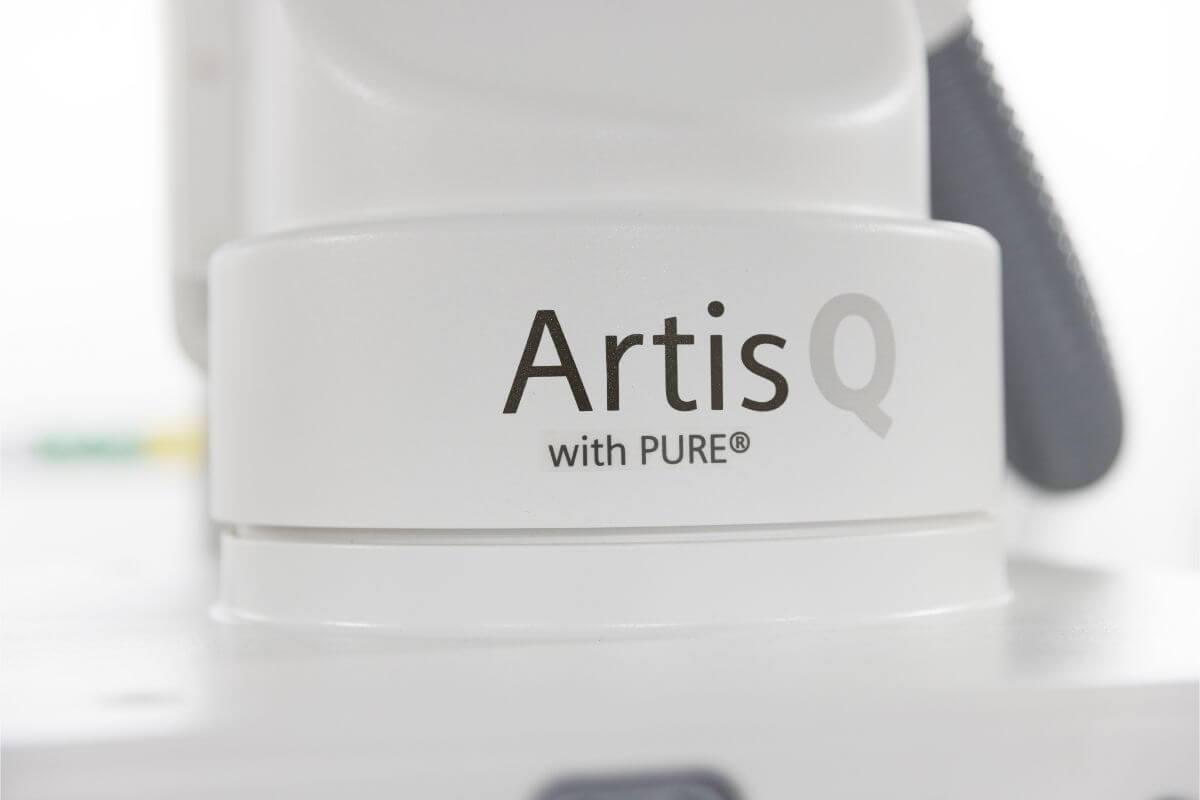- About Us
- Services
- Bariatrics
- Cardiac Catheterization Laboratory (Cath Lab)
- Center for Sleep Medicine
- Ear, Nose, and Throat (ENT)
- Emergency Medicine
- Gastroenterology
- General Surgery
- Laboratory
- Gynecology
- Orthopedics
- Pain Management
- Pharmacy
- Physical Therapy
- Plastic Surgery
- Podiatry
- Pulmonary Medicine
- Radiology
- Robotic Surgery
- Spine Surgery
- Stroke
- Urology
- Vascular Surgery
- Wound Care Center
- Find a Doctor
- Patients & Visitors
- News & Education
- Contact
- Patient Portal
- Physician Portal
- Affiliated Companies
Cardiac Catheterization Laboratory (Cath Lab)
(201) 392-3465
(201) 392-3467
Monday - Thursday
7:00AM - 5:00PM
Cardiac Catheterization Laboratory (Cath Lab)
A cardiac catheterization lab, or cath lab, is a specialized medical laboratory in which doctors perform testing and procedures to diagnose and treat cardiovascular conditions. Because of the complexity of the cardiovascular system and the heart itself, these types of tests and procedures require the special facility. The cath lab at Hudson Regional Health provides expert cardiovascular care from a team of cardiologists, nurses, and radiologists who are trained in a variety of diagnostic and interventional cardiac procedures.
(201) 392-3465
(201) 392-3467
Monday - Thursday
7:00AM - 5:00PM
State-of-the-Art Facility & Technology
Hudson Regional Health’s state-of-the-art cath lab is a newly renovated and expanded facility that is equipped with the latest in advanced medical technology. This includes digital X-ray imaging systems and a range of other diagnostic tools that can view the arteries and blood flow. Our commitment to staying at the forefront of medical technology ensures that our patients receive the highest level of care possible.
Siemens ARTIS icono biplane
The Siemens ARTIS icono biplane is an advanced X-ray imaging system that is used in advanced endovascular procedures. This system utilizes two X-ray cameras positioned at right angles to each other, allowing for the simultaneous capture of images from multiple perspectives. The biplane feature of this system is particularly beneficial for patients undergoing diagnostic cerebral angiograms, acute stroke interventions, treatment of cerebral aneurysms, embolizations, and more. The biplane configuration provides high-resolution images of complex three-dimensional structures, such as cerebral arteries. It also reduces the need for repeat imaging, reducing radiation exposure to patients and staff.
Insurance Information
Hudson Regional Health is in-network with all major insurance plans, including Aetna, Cigna, Horizon Blue Cross Blue Shield, Medicare, Medicaid, United Healthcare, and more.
Leadership

Anuj Shah
MD Director of Cardiac Catheterization Lab
View ProfileHudson Regional Health’s cath lab offers the following services:
Angiogram (Cardiac Catheterization)
An angiogram, or cardiac catheterization, is a diagnostic test that uses X-ray imaging to see the blood vessels in the body, commonly used to diagnose and evaluate cardiovascular conditions like coronary artery disease, peripheral artery disease, aortic aneurysms, congenital heart defects, and more. During the procedure, a small tube called a catheter is inserted into a blood vessel in your groin or arm and guided to the area of interest. A contrast dye is injected through the catheter, which makes blood vessels visible on X-ray imaging. This can help doctors identify blockages or narrowings in the blood vessels, and can also help determine the best course of treatment.
Angioplasty
An angioplasty is an interventional procedure commonly used to treat blockages or narrowings in the blood vessels, particularly those affecting the heart and blood flow. This is an effective treatment for cardiovascular conditions that cause a buildup of plaque in the blood vessels, like peripheral artery disease. During the procedure, a small balloon attached to a catheter is inserted into the blocked or narrowed artery and inflated to open up the artery and improve blood flow. In some cases, a stent may also be placed in the artery to help keep it open.
Electrophysiology Procedures
Electrophysiology is a branch of cardiology that focuses on the electrical activity of the heart and the diagnosis and treatment of abnormal heart rhythms, also known as arrhythmias. These procedures include pacemaker implantation, generator changes, and loop recorder implantation.
Loop Recorder Implantation
A loop recorder is a small recording device that continuously monitors the heart’s electrical activity. The device needs to be implanted under the skin, which is a minor procedure that results in valuable information about the heart’s electrical activity and can help diagnose and monitor a range of heart-related conditions that are causing symptoms like fainting, palpitations, and other symptoms. During the implantation, a small incision is made under the skin of the chest, and the loop recorder is inserted through a catheter and positioned near the heart. Loop recorders can also be used to monitor patients who have already been diagnosed with a heart condition or who have had a previous heart surgery or intervention. By continuously monitoring the heart’s electrical activity, the loop recorder can detect changes or irregularities in the heart’s rhythm, allowing physicians to adjust treatment plans as needed.
Pacemaker Implantation
A pacemaker is a small device that is implanted under the skin of the chest to help regulate the heart’s rhythm. The device uses electrical signals to stimulate the heart to beat at a normal rate. The pacemaker device consists of two main components: the generator and the leads. The generator contains the battery and the electronic circuitry that controls the pacing of the heart. The leads are thin, insulated wires that are inserted through a vein and guided to the heart, where they are attached to the heart tissue. During implantation, a small incision is made under the skin of the chest, and the pacemaker leads (wires) are inserted through a vein and guided to the heart. The leads are then attached to the pacemaker device, which is placed under the skin near the collarbone. Pacemaker implantation is done to treat a range of heart conditions, particularly those involving an abnormal heart rhythm or a slow heart rate, such as bradycardia or heart block.
Peripheral Vascular Procedures
Peripheral vascular procedures are performed in a cath lab to diagnose and treat conditions affecting the blood vessels outside of the heart and brain, such as those in the arms, legs, or abdomen. These conditions may include peripheral artery disease, deep vein thrombosis, or varicose veins. If blockages are found during peripheral vascular catheterization, a doctor may elect to open the blockage and treat with an interventional procedure, like angioplasty.
 (201) 392 3100
(201) 392 3100